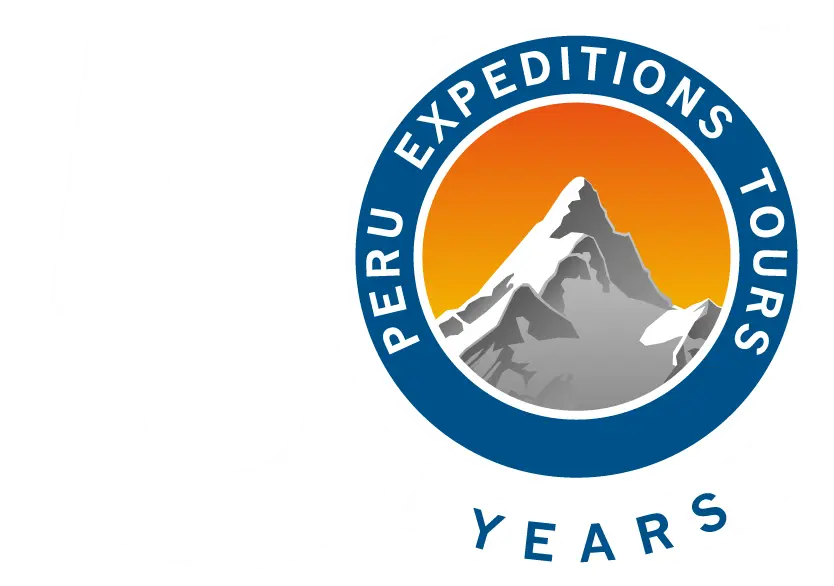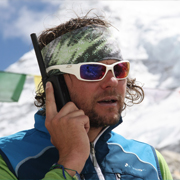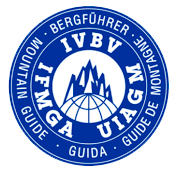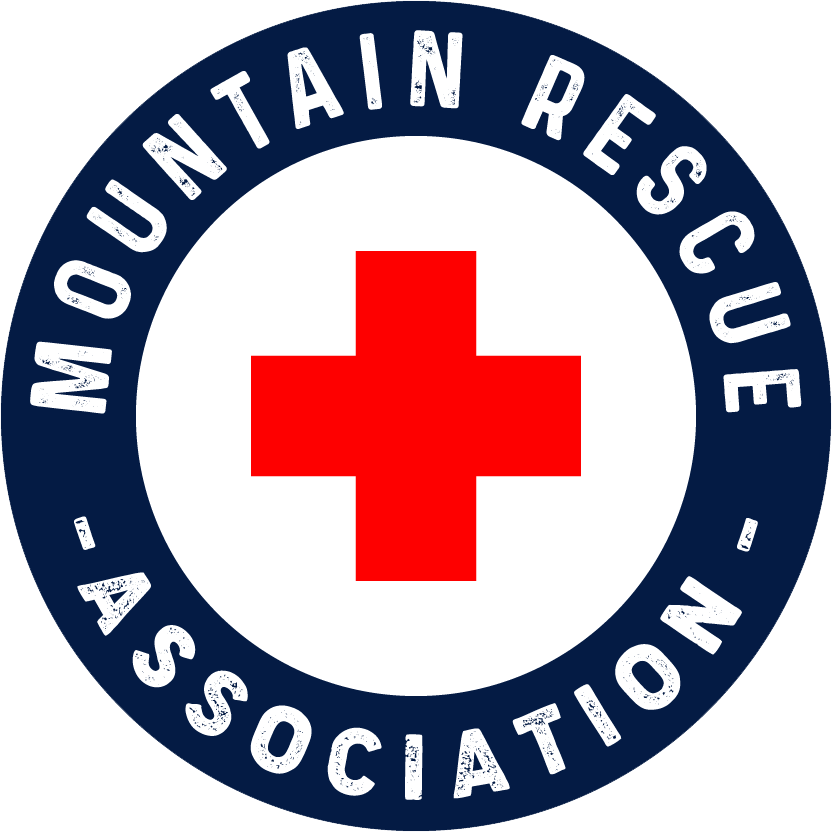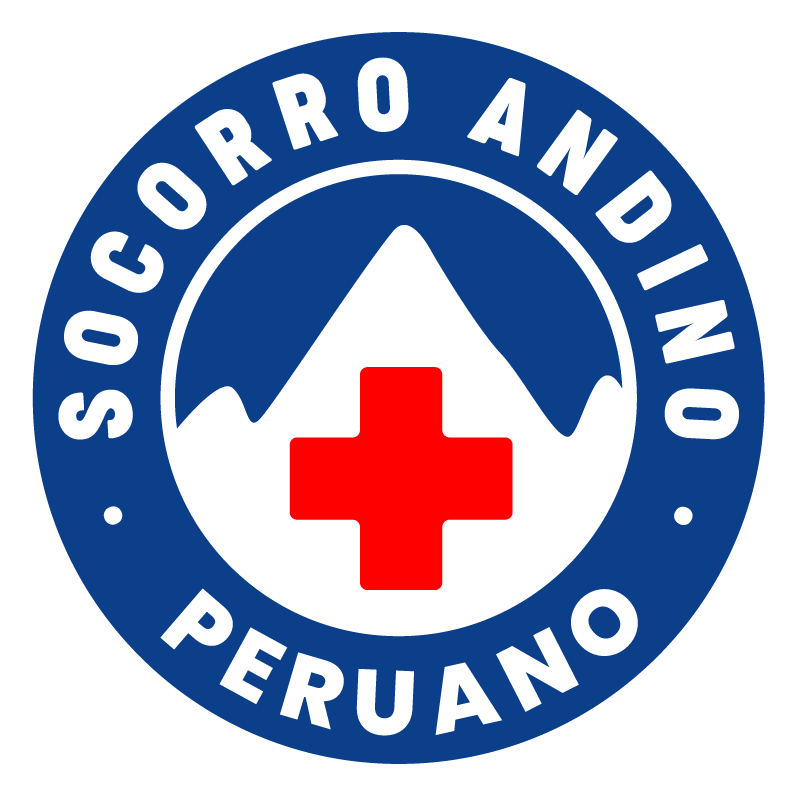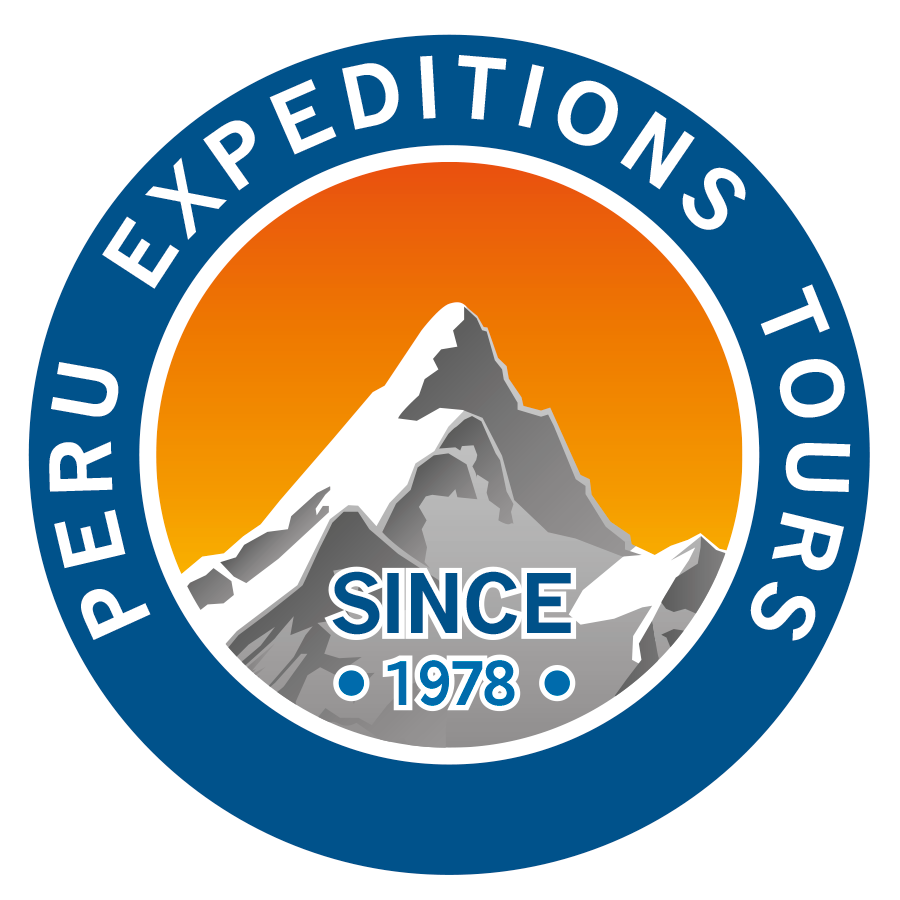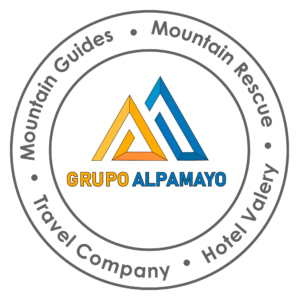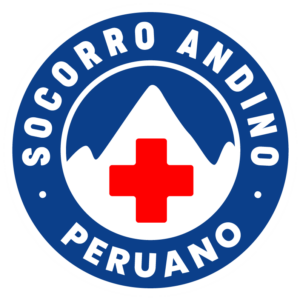Expeditions Nevados Alpamayo (5947 m), Artesonraju(6025 m) & Huascaran (6768 m)
- Home
- Mountaineering and Expeditions in High Mountains i…
- Expeditions Nevados Alpamayo (5947 m), Artesonraju…
About Trekking Santa Cruz: One of the most popular treks in the Cordillera Blanca, the hike around this subtropical mountain range passes through impressive landscapes of uncommonly beautiful mountains, frequent lakes and glaciers. The camps are some of the most spectacular in the world. This is a short and very popular hike with spectacular views of lakes and mountains.
For acclimatization, we begin with a day hike to Laguna (Lake) Churup, at 4,450m. The highest and most demanding pass on the Santa Cruz trek is Punta Union Pass (4750m)
About Alpamayo Peak: The pyramid shaped Alpamayo is considered one of the most beautiful mountains in the world. The ascent toward the peak is very steep and the majority of it is a technical climb. This mountain should only be attempted by those who are well acclimatized and who have summited of other high peaks. From one side Alpamayo is an almost perfect pyramid, covered with enormous ice shelves. The other face, the trapezoidal southwest wall, is even more beautiful. All of the Cordillera Blanca mountain range is protected by Huascarán National Park, a paradise of snowcapped peaks. The park also includes the peaks of Huandoy and Huascarán (the highest mountain in Peru), as well as 663 glaciers, 269 lakes, some 42 rivers, as well as 33 archaeological sites.
About Artesonraju Peak: Artesonraju (6,025 m) is one of the approximately 50 peaks of the Cordillera Blanca known especially for its exceptional settings for mountaineering. Pyramidal and completely covered in ice and snow all year, this mountain of unequalled beauty is situated between the two gorges of the Santa Cruz Massif to the north and the Parón to the south. It’s frequently considered the iconic mountain in the Paramount pictures introduction.
From its high plateau alongside the Paron Gorge, it is 1,025 meters to the peak. It can usually be climbed in 8-12 hours round-trip. According to the International French Adjectival System (IFAS), it’s categorized as TD+: very difficult +, on the route of the South Ridge, and D: Difficult, via the “normal” route.
Artesonraju offers two primary ascent routes: The first runs through the North Edge, born in the Santa Cruz Gorge, while the second rises via the southeast face from Parón Lake, at the end of the gorge of the same name. This last route is very technically demanding, requiring advanced experience in ice climbing. You conquer a slope of 1,200 meters with a gradient that varies between 45 and 55 degrees, sometimes surpassing 60 degrees.
Avalanches are a common occurrence at the start of the climbing season, due to the large accumulation of snow on the steep slopes. During May and August, the strong winds produce the phenomenon known as “Placa de Viento“ or wind slabs – very dangerous because below a thin layer of ice there is spongy snow that doesn’t offer good anchor nor security.
About Huascarán Peak: Huascarán is the highest peak in Peru. This mountain has two summits: Huascarán North (6655 m) and the main summit, Huascarán South (6768 m). Many climbers dream of reaching this high summit of 6,768 meters. Technically, the climb is not difficult, nevertheless, due to its elevation and risk of avalanches, it is a serious climb.
The mountain offers multiple routes to arrive at the highest point in Peru. In any case, anyone attempting this peak should be well acclimatized to altitude before venturing to these huge glaciated mountains.
Observation: Huascarán South Summit (6.768 m) The conditions on all mountains change every year; particularly since the glacier between the first and second camps is receding. Accordingly, some years it is a challenge to get from High Camp 1 to High Camp 2 due to the crevasses and the large avalanches that can fall in the chute. An ascent of Huascarán is, without a doubt, one of the highlights of mountaineering in the Andes.
- 24 Days/23 Nights
- June to August
- Demanding
 Condition
Condition
Travel Program
Day 1: Flight to Lima. Lodging in the hotel
Arrival in Lima – the large city in South America; population approximately 11 million. Rest or explore the city on your own.
Overnight
Hotel
Meals
-/-/-
Day 2: Huaraz - Trekking to Laguna Wilcacocha (3725 m)
For acclimatization we visit the Cordillera Negra, where you can see a magnificent view of the Cordillera Blanca. We’ll have a chance to see wild ducks on the beautiful lake. Wilcacocha, because of its location, is an exceptional viewpoint for the Cordillera Blanca, allowing us to identify peaks (from north to south) Huandoy, Huascarán, Chopicalqui, Hualcan, Copa, Vallunaraju, Ocshapalca, Ranrapalca, Palcaraju, Churup, and many more.
Overnight
Hotel
Driving
By bus 8hours approx
Meals
B/L/-
Day 3: Huaraz - Trekking to Laguna Ahuac (4650 m)
We leave from our hotel in the Independence District of Huaraz, which faces San Cristobal Peak. We travel in our vehicle toward the town center of Wilcahuain and then walk for about 4 hours along natural trails covered with vegetation. Ahuac is a beautiful lake of clean and crystal clear water, like a mirror reflecting the blue ski and the mountains that surround it. It’s an auspicious place for adventure tourism with a bit of a mystic quality.
Overnight
Hotel
Driving
1 Hour approx
Hiking
7 Hours approx
Meals
B/L/-
Day 4: Huaraz - Transfer to Yuracoral - Cebollapampa - Trekking to Laguna 69 (4650 m) - Yuracoral Camp (3850 m)
After a good breakfast, we’ll take our minibus to the Santa Valley, to the northern small village of Yungay. As the first excursion for acclimatization, we hike to Lake 69 (4,650 m), about 6 hours round trip. Fantastic views of the highest peaks in the Cordillera Blanca, and the deep blue lake surrounded by glaciers make up for the difficulty of the hike. We return in the afternoon to the Llanganuco gorge, where we establish our first camp in Yuracoral (3850 m).
Overnight
Camping
Driving
3 Hour approx
Hiking
5 Hours approx
Meals
B/L/D
Day 5: Cebollapampa/Yuracoral - Transfer to Portachuelo Pass (4650 m) - Huaripampa Camp (3550 m) - Tuctupampa Camp (4150 m)
From our camp in Yuracoral, we transfer in the minibus to Portachuelo Pass (4650 m) on the east side of the Cordillera Blanca. We arrive in the village of Vaqueria (3,750 m). In this small village our pack animals are waiting. We then have a short walk past the camp at Huaripampa (3,550 m ) beyond the village of Paria (3,800 m) and our camp at Tuctupampa (4,150 m.) From here you can see Punta Union Pass. Camp at Tuctupampa.
Overnight
Camping
Driving
3 Hour approx
Hiking
5 Hours approx
Meals
B/L/D
Day 6: Camp Tuctupampa - Trekking to Punta Union Pass (4750 m) - Taullipampa Camp (4250 m) - Alpamayo Base Camp (4300 m)
Today we cross Punta Union Pass (4,750 m). From the pass we can see the entire Santa Cruz Valley, and the trail we’ll follow. After stopping for a time at the pass to take pictures, we descend to Taullipampa Camp (4,250 m) and continue to Alpamayo Base Camp. From this point we can see Alpamayo Peak; our goal for this expedition. Camp at Quebrada Arhuecocha (4,300 m).
Overnight
Camping
Hiking
7 Hours approx
Meals
B/L/D
Day 7: Alpamayo Base Camp - Climb to Alpamayo Moraine Camp (4900 m)
Today we have a good breakfast and prepare the expedition equipment for Alpamayo. From here we’ll use a local team (porters, cook and local guides), who will help us carry everything. We set out for the moraine after a small lunch in Base Camp. The trail takes us across a steep moraine at the tongue of the glacier to High Moraine Camp (4,900 m).
Overnight
Camping
Hiking
4 Hours approx
Meals
B/L/D
Day 8: Alpamayo Moraine Camp - Climb to Alpamayo High Camp (5300 m)
Alpamayo High Camp is on the steep glacier at the base of Alpamayo and Quitaraju. Due to the constant shrinkage of the glacier, every year we find a different situation along this section. We find magnificent views from High Camp the summit looks close enough to touch! We have dinner a bit early because we must rise very early, for the long day that awaits us tomorrow. High Camp (5,300 m).
Overnight
Camping
Climbing
3 hours approx
Hiking
2 Hours approx
Meals
B/L/D
Day 9: High Camp - Summit Alpamayo (5947 m) - High Camp (5300 m) or Descend to Base Camp (4300 m)
Summit day! One possible route is the French route, a 60 to 80 degree wall of ice which narrows toward the top. . Above the wall, you need to conquer a few meters to the highest point of the narrow ridge. At the summit, you will be rewarded with a magnificent view of the Cordillera Blanca! The neighboring peak of Quitaraju (6,036 m) is almost within striking distance; and to the southwest you can see the remarkable summit of Huascarán (6,768 m.) After a brief rest and photos at the summit, we return quickly to High Camp via a rappel down the route we came up. In good weather, the climb to the summit and return to base camp can be done before noon. The ascent takes 5-6 hours, while the descent takes about 2-3 hours. If participants are tired, we can stay one more night in High Camp. If everyone feels fine, which is usual, we descend to Alpamayo Base Camp (4,300 m).
Overnight
Camping
Climbing
12 hours approx
Hiking donw
3 Hours approx
Meals
B/L/D
Day 10: Reserve or Rest day in Alpamayo Base Camp (4300 m)
Extra day scheduled in case of bad weather or to return to Base Camp if staying the previous night in High Camp.
Overnight
Camping
Hiking
Rest day
Meals
B/L/D
Day 11: Alpamayo Base Camp - Trekking to Artesonraju/Taullipampa Base Camp (4250 m)
Today after breakfast we transfer to Artesonraju/Taulipampa Base Camp to prepare for our next summit: Artesonraju (6025 m). The burros will carry our luggage again. Here we establish our camp and organize our things.
Overnight
Camping
Hiking
3 Hours approx.
Meals
B/L/D
Day 12: Taullipampa Base Camp - Climb to Artesonraju Moraine Camp (5000 m)
From here we again use the help of our high altitude porters as we move to Artesonraju Moraine Camp. Trekkers need to help carry their personal expedition equipment because the hilly nature of the moraine makes the climb more demanding. We rise through the shrubs and trees for 4-5 hours along the moraine crest, which is sometimes slippery and steep. Artesonraju Moraine Camp.
Overnight
Camping
Hiking donw
3 Hours approx.
Meals
B/L/D
Day 13: Artesonraju Moraine Camp - Summit Artesonraju (6025 m) - Descend to Moraine Camp (5000 m) or Taullipampa Base Camp (4250 m)
Summit day! The route we are climbing today is the North Ridge via the northeast spur. We climb steep slopes to the left of the ridge, avoiding the crevasses and seracs. The slope of the wall is from 40-60 degrees; the conditions can vary a lot from one year to the next. The ascent is approximately 8-9 hours. At the summit you will be rewarded with a magnificent view of the Cordillera Blanca! The neighboring peaks of Huascaran North and South, Huandoys, Santa Cruz, Caraz, and many more. After a brief rest and picture-taking at the summit, we return to Moraine Camp with some sections done via rappel. The descent will take about 3-4 hours. If participants are tired, we can stay another night at Moraine Camp. If everyone feels fine, we usually drop down to Artesonraju Base Camp.
Overnight
Camping
Climbing
12 hours approx
Hiking donw
4 Hours approx.
Meals
B/L/D
Day 14: Reserve day. Options: Rest day in Taullipampa Base Camp (4250 m) or Descent to Taullipampa Moraine Base Camp (4250 m)
Weather day. Options: Rest day in Base Camp, or return to Base Camp from High Moraine Camp.
Overnight
Camping
Hiking donw
4 Hours approx.
Meals
B/L/D
Day 15: Taullipampa Base Camp - Trekking Descent to the village of Cashapampa - Transfer to Huaraz
Today we rise early to begin our hike down through the Santa Cruz Valley to Cashapampa (about 6 hours.) In Cashapampa our minibus awaits to take us and our local expedition team to Huaraz. Overnight in the hotel.
Overnight
Hotel
Hiking donw
5 Hours approx.
Meals
B/L/-
Day 16: Rest day in Huaraz. Optional: Rock climbing at the walls of Chancas
A classic location for many who like to practice rock climbing. This area is 40 minutes north of Huaraz.
It was developed thanks to the guides of Don Bosco in the Andes in 1997. It has 8 developed routes of different difficulties. This is a good place to spend a quiet day in nature and then visit the hot springs to relax aching muscles.
Overnight
Hotel
Hiking
1 Hours approx.
Meals
B/L/-
Day 17: Huaraz - Transfer to the village of Musho (3000 m) - Trekking to Huascarán Base Camp (4250 m)
Now our last and best mountain; the highest mountain in Peru, Huascarán. Transfer from Huaraz through the Callejón de Huaylas, the central section of the valley formed by the Santa River, between the Cordillera Blanca and the Cordillera Negra. We arrive at the village of Musho, the baggage carried on burros._ From Musho it’s a 4-5 hour hike to Huascarán Base Camp (4,250 m) From the camp we have a beautiful view of the Cordillera Negra.
Overnight
Camping
Driving
3 Hour approx
Hiking
5 Hours approx.
Meals
B/L/D
Day 18: Base Camp - Ascent to High Camp I (5350 m)
Today we are going to climb to High Camp 1. Porters will help us carry our camping equipment and food. From this point, the southern and northern peaks of Huascarán seem close enough to touch. Dinner and lodging in tents on the glacier. At this altitude, the temperature at night falls to as low as -13°C.
Overnight
Camping
Climbing
2 hours approx
Hiking
2 Hours approx.
Meals
B/L/D
Day 19: High Camp I - Ascent to High Camp Alto (Garganta, 6000 m)
Very early this morning we continue to climb over the steep section of the glacier, with crevasses, avalanches in the chutes, and an area of icefall with 50° faces requiring ice climbing. We expect to find changes to the rugged glacier because every year with the retreat of the glacier, the conditions change with regard to crevasses, bridges or new avalanches. Our porters accompany us to Camp 2 in La Garganta (“The Throat“), the saddle between the North Summit (6655 m) and the South Summit (6768 m.) We sleep in tents on the glacier.
Overnight
Camping
Climbing
5 hours approx
Meals
B/L/D
Day 20: High Camp II (Garganta, 6000 m) - Ascent to the Summit of Huascaran (6768 m) - Trekking descent to Base Camp
Summit day! Very early this morning we begin the ascent to the South Summit (6,768 m). The route leads abruptly up, continues through many crevasses and avalanche zones until we arrive at the flat summit ridge. From here you can see all of the Cordillera Blanca, including Alpamayo to the north. From this high point we see most of the most important mountains of the range. The unforgettable view from the summit makes us forget all our effort to get here. After enjoying the summit and taking pictures, we begin our descent back to High Camp II at the back of the gorge. If everyone still feels fine, we can descend to Base Camp (weather permitting) or stay in High Camp II. Rest one hour and begin the descent to Base Camp. Dinner and lodging in Base Camp. Time required: ascent: 6-7 hours; descent to High Camp II: 3-4 hours; Descent from High Camp II to Base Camp: 3-4 hours.
Overnight
Camping
Climbing
12 hours approx
Hiking down
5 Hours approx.
Meals
B/L/D
Day 21: Base Camp - Trekking to the village of Musho (3000 m) - Transfer to Huaraz
Our last day on the expedition. Early in the morning the mule/burro drivers arrive, and after the baggage is loaded, we descend to the village of Musho, a walk of 3-4 hours. From here our private transport will be waiting to take us to Huaraz, our final destination. Here we say goodbye to our local workers, and have a complementary dinner at the home of Juventino Albino Caldua – a special dish called Pachamanca. Lodging in the hotel.
Overnight
Hotel
Hiking down
4 Hours approx.
Meals
B/L/D
Day 22: Transfer to the Anta Airport and 50 minute flight to Lima, or transfer to the bus terminal for the 8 hour ride to Lima. Transfer to the hotel
Options: Flight or bus. Flights are via LC-Peru and last 50 minutes.
Overnight
Hotel
Driving
8 Hours by bus approx
Meals
B/-/-
Day 23: Stay in Lima - Transfer to the Airport
Arrival in USA or Austria, Switzerland,Germany, etc.
Overnight
Hotel
Driving
1 Hours approx
Meals
B/-/-
Day 24: Arrival in Europe or the country of origin
Arrival in USA or Austria, Switzerland,Germany, etc.
Overnight Home (-/-/-)
Included meals: B=breakfast; L=lunch; D=dinner
What's Included
Services included in the prices:
- Acclimatization Tour
- Peruvian qualified and experienced local guide/s
- Entrance fees to the Huascaran National Park
- Cooks and helpers
- All meals during the tour
- Donkey driver and donkeys
- Camping tents (2 persons)
- Porters for Nevados Alpamayo, Artesonraju and Huascaran
- Kitchen equipment
- Transportation as tour schedule / Huaraz
- Pick up at the airport in Lima to the Hotel
- Transfer from the Hotel to the airport and bus station
- Transport public bus or Domestic flight Airline LC-Peru
- Hotel Kamana 2 nights in Lima or other hotel
- Hotel Casa Blanca 6 nights in Huaraz or other hotel
Not included:
- International flights to Lima / Peru round trip
- Transfer from the airport for bookings of individual flights with different times of arrival / departure
- Exit tax at the airport in Lima
- Travel accident and health insurance
- Luggage insurance and trip cancellation
- Meals in restaurants in Lima and Huaraz
- Personal expenses
- Personal equipment (such as boots, ice ax, crampons, harness, sleeping bag, mat, Goretex, etc.)
- Tips
Keep Exploring More Travel Ideas Across South America | Popular destinations
Discover a wide range of travel ideas throughout South America. Every one of our proposals is fully customizable to fit your preferences and make your journey truly unique.
- Visit Machu Picchu
- Inca Trail Trekking
- Sacred Valley Tour Cusco
- Rainbow Mountain Cusco
- Backpacker trips to Cusco
- Choquequirao Trek
- Ausangate Trek to Machu Picchu
- Salkantay Trekking Adventure
- Short Inca Trail to Machu Picchu
- Lares Trek to Machu Picchu
- Vilcabamba Trekking
- Climb Volcano Chachani
- Visit Salar de Uyuni
- Bolivian Highlands
- Climb Huayna Potosi
- Visit Isla del Sol Sun Island
- Climb Volcano Sajama
- Climb Cotopaxi & Chimborazo:
- Climb Volcano Ojos del Salado
- Visit Torres del Paine
- Climb Mount Aconcagua
- Visit Iguazu Falls & Rio
- Climb Mount Orizaba
- Visit Rainforests and Volcanoes
- Climb Volcano Tolima
What to Bring
What to Bring or take fo Day Hiking and Technical Equipment for Climbing Expedition
This equipment list is compiled to provide you with adequate help when choosing your equipment for a climb. Most items are required. Please consider each of them and make sure you understand the function and exclusive use for mountaineering, before substituting or removing items from this list. Please note that this list has been carefully annotated by the organizer. Remember that mountaineering, climbing or mountain expeditions tours is an extreme, risky sport, therefore everything related to it is of great attention.
Equipment Trekking
![]() Hiking backpack for hiking 50 to 60 liters
Hiking backpack for hiking 50 to 60 liters
![]() Light gloves for hiking or (Optional Mittens waterproof)
Light gloves for hiking or (Optional Mittens waterproof)
![]() Medium weight socks
Medium weight socks
![]() Sleeping bag (-15º to 20ºC)
Sleeping bag (-15º to 20ºC)
![]() Small daypack for one day hiking 30 liters
Small daypack for one day hiking 30 liters
![]() Weather-appropriate clothing (think moisture-wicking and layers)
Weather-appropriate clothing (think moisture-wicking and layers)
![]() Hiking boots or shoes
Hiking boots or shoes
![]() Medium weight parka with fibber fill or down
Medium weight parka with fibber fill or down
![]() Rain poncho (or rain gear)
Rain poncho (or rain gear)
![]() Long-sleeved shirts
Long-sleeved shirts
![]() Fleece or Wool sweater and/or trousers
Fleece or Wool sweater and/or trousers
![]() Lightweight pants
Lightweight pants
![]() Cotton short-sleeved shirts or t-shirts
Cotton short-sleeved shirts or t-shirts
![]() Water bottle for hiking or trekking
Water bottle for hiking or trekking
![]() Strong waterproof duffel bag
Strong waterproof duffel bag
![]() Flashlight with spare batteries and bulb
Flashlight with spare batteries and bulb
![]() Towel for personal hygiene each participantFirst-aid kit
Towel for personal hygiene each participantFirst-aid kit
![]() Regular and long underwear
Regular and long underwear
![]() Knife or multi-tool
Knife or multi-tool
![]() Light cap and wool hat
Light cap and wool hat
![]() Sunglasses with UV certification, Sun block, lips
Sunglasses with UV certification, Sun block, lips
![]() The rest of the list Essentials as appropriate for your hike
The rest of the list Essentials as appropriate for your hike
![]() Grooming and personal hygiene kit
Grooming and personal hygiene kit
![]() One Hiking Buff per person
One Hiking Buff per person
Equipment Mountain
![]() 3 Locking carabiners, we recommended per person
3 Locking carabiners, we recommended per person
![]() We recommend 2 ice screws for each client
We recommend 2 ice screws for each client
![]() 1 Daisy Chain (Life Line) per each person
1 Daisy Chain (Life Line) per each person
![]() 2 Ice axes (per person) technical, we recommended GRIVEL company
2 Ice axes (per person) technical, we recommended GRIVEL company
![]() 1 ATC descender (Rappel), this is very necessary for technical mountains
1 ATC descender (Rappel), this is very necessary for technical mountains
![]() 2 Cords for prusik, very important (Size Cord 6 mm x 10 m. long)
2 Cords for prusik, very important (Size Cord 6 mm x 10 m. long)
![]() Gloves(Good gloves) for expeditions over 6000meters
Gloves(Good gloves) for expeditions over 6000meters
![]() Harness for climbing
Harness for climbing
![]() Sleeping pad / Mattress, we recommend with air or inflatable mattress
Sleeping pad / Mattress, we recommend with air or inflatable mattress
![]() Crampons, we recommended GRIVEL company
Crampons, we recommended GRIVEL company
![]() Walking sticks – Trekking Poles (optional), a pair per person, we recommended GRIVEL company
Walking sticks – Trekking Poles (optional), a pair per person, we recommended GRIVEL company
![]() Down Jacket for expedition
Down Jacket for expedition
![]() Very important to have personal clothing such as pants and jacket with GOROTEX certification
Very important to have personal clothing such as pants and jacket with GOROTEX certification
![]() First aid kit, for high mountains, because we as guides cannot medicate clients
First aid kit, for high mountains, because we as guides cannot medicate clients
![]() Backpack Capacity 60 liters, it is better to have a bigger backpack to go comfortably to the high camps, because here you have to carry all your personal things
Backpack Capacity 60 liters, it is better to have a bigger backpack to go comfortably to the high camps, because here you have to carry all your personal things
![]() Gaiters or Leggings, now modern boots already have built-in (Incorporated), but better to have an extra pair
Gaiters or Leggings, now modern boots already have built-in (Incorporated), but better to have an extra pair
Dressing appropriately for the mountains can make the difference between a pleasant trip and a really uncomfortable one. Clothing must provide the right degree of temperature, perspiration and be well ventilated. Preferably cotton clothing should be avoided, as in humid conditions they absorb body heat.
In general, the weather conditions in in the Andes of South America can vary from day to day and even throughout the day. Therefore, clothing must be versatile.
Please do not hesitate to contact us with any questions you may have regarding the necessary equipment.
Prices & Dates
FROM/TO
PRICE (USD)
TRAVEL STATUS
–
FROM/TO
PRICE (USD)
TRAVEL STATUS
–
FROM/TO
PRICE (USD)
TRAVEL STATUS
–
FROM/TO
PRICE (USD)
TRAVEL STATUS
–
- Single Supplement (I want my own room and tent) – $000 on request.
Please note: Insurance for emergency evacuation is required for this trip. Call for more details.
» Additional dates available upon request
» Rates may vary from July 26th to 31th for the national holidays
Prices (per person):
| 1 PAX | 2 PAX | 4 PAX | 6 PAX | 8 PAX | 10 PAX | 12 PAX | 14 PAX |
|---|---|---|---|---|---|---|---|
| 15000 USD | 7500 USD | 7350 USD | 7200 USD | 7050 USD | 6900 USD | 6750 USD | 6600 USD |
Deposit for reservations: — USD (– EUR) ✓ Full payment 40 days before. No refund if you cancel less than 30 days!
Places: *Available
Trip-code: Number ►PER-
Duration: 24 days
Participants: Minimal: 4 Maximal: 12
Members: We don’t have an open group to join – We can open a new group – Contact us!
Country / Location: Peru
Mountain Guide: Eric Albino Lliuya
Other dates / additional info: Contact us!
3% early bird discount when booking 6 months prior to departure 2025
Legend Booking-information:
EZZ Single room supplement
🟢 On this trip, places are still available.
🟡 On this trip, only a few places left.
🔴 This trip is sold out / closed.
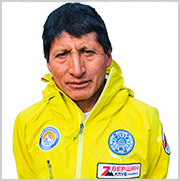
Juventino Albino Caldua
Expert guide certified by IVBV - UIAGM - IFMGA
Co-Founder, Peru Expeditions
- WhatsApp: +51 943 081 066
- E-Mail: [email protected]
Hans Honold | Certified Mountain and Ski Guide
For a trip with a Professional Certified Mountain Guide from abroad with your own language that you speak, please request us to get in touch. We have guides working for our company from all over the world who are members of IVBV/UIAGM/IFMGA Certified Guides.
- Tel: +49(0)7344 929144-0
We are a Private Company with a Specialized Peruvian Andean Rescue Team “Socorro Andino Peruano”, offering expert High Mountain Rescue Services. Additionally, we provide satellite internet access during treks or expeditions, ensuring the safety and connectivity of our clients at all times. For more information, feel free to contact us via email or phone
- Tel: +1 (617) 459-4200
Only $1000 deposit to book
Pay over time, interest free
No booking fee, no change fee
24/7 support
Accommodations
Scroll through our exclusive accommodations for this trip below. Although very unlikely, we will be able to make substitutions when necessary. The comfortable accommodations that guests stay in every night offer comfort, the level that these options are are 3 stars and some hostels in some towns of first class quality to make your stay very pleasant.
*These exact accommodations are not guaranteed. In some cases, alternative accommodation of similar quality and location can be used.
Videos
Frequently Asked Questions
What our travelers or clients always ask questions before joining our trips, tours & expeditions, read all the information provided here.
Suggested FAQs
What experience and how fit do I need to be to climb this mountain? Is this program suitable for children or older people?
For our mountain climbing trips: If they are easily accessible mountains: For easy-climb mountains, well, you don’t need much experience, but if you already want to climb mountains above 6,000 meters and the conditions become more difficult, we recommend if you already want to go through mountains above 6,000 meters, have a basic or intermediate course for a good preparation. It is very important to be physically, technically and psychologically prepared.
Regarding the preparation of children: Everything will depend on which mountain you want to climb with your children, once you are clear on which of our tours or mountains you want to go with your children, we can give you some advice or see how to prepare them before going with they.
Regarding older people: It all depends on the condition of experience and how well the person is in health, on many occasions older people are the best to walk in the mountains because they have more experience, so it is always good to ask and find out about their experience of older participant. If you have any other questions, please contact us. For calls or inquiries to this number: +51 943 081 066
Will I need to bring any technical equipment of my own? Is it possible to rent equipment, and if so, what would be the approximate cost of that?
In all our trekking or mountaineering trips we do not include personal equipment in our prices, so you have to have your own equipment: Personal equipment (such as boots, ice ax, crampons, harness, sleeping bag, mat, Goretex, etc. ) and also within each page of the trips that we sell is a small list so you can see it on our website.
Our company can also rent the materials that you would need for your trip, see the list here on our website: https://peru-expeditions.org/equipment-rental/ . For calls or inquiries to this number: +51 943 081 066
Are there any other special requirements such as permits/insurance/vaccines that I need to consider before the tour?
Safe and effective vaccines are available that provide strong protection against serious illness, hospitalization and death from COVID-19. Billions of people have been vaccinated against COVID-19. Getting vaccinated is one of the most important things you can do to protect yourself against COVID-19, help end the pandemic and stop new variants emerging.
We also recommend having accident insurance, we always recommend. We are Partners –Global Rescue. If you have any other questions about the trip we can schedule a date for a calling via WhatsApp. For calls or inquiries to this number: +51 943 081 066
What experience do I need to have? How fit do I need to be? Is this program suitable for children or older people?
To do long-distance hiking you need to at least train or do some tours such as visiting lagoons to get the experience and feel comfortable with what you do, it is always good before doing a long-distance hiking tour to test yourself so as not to be with the problems of altitude sickness during the trekking, and if you travel with children it is good to first train them before taking them, if they are accompanied by an adult of legal age, they must do a good acclimatization before going on the long-distance tour or with high altitude camps If you want to know or learn more advice, we can schedule a call via WhatsApp to clarify your doubts. For calls or inquiries to this number: +51 943 081 066
How far in advance should I start training and what kind of training do you suggest?
The preparation is according to what type and what technical level you want to go and climb a trek or mountain, the preparation will always gain experience little by little.
For this type of demanding or technical climbing sports, it is recommended to do some summits above 5 thousand meters beforehand and have good knowledge of high mountain technical equipment such as the use of technical ice axes, ice screws, correct use of crampons, and of course all the technical material. For more information, we can schedule an appointment to be able to explain in more detail everything about the mountain equipment and the preparations prior to joining our outings. For calls or inquiries to this number: +51 943 081 066
What is the average distance and altitude gain that we will hike each day?
Every day we have active walks around approximately 4, to 5 sometimes 6 hours of walking, everything is according to your pace and physical condition of each person, in each of our travel programs you will find more detailed information, and if If you need more information about each day of the travel program, we can schedule a call via WhatsApp to clarify your doubts or questions, for this please contact us. For calls or inquiries to this number: +51 943 081 066
Will there be porters to help to carry group and personal equipment?
In our trips, either hiking or mountaineering: Depending on the type or destination of the trip that you are going to book, in some parts of the treks you go with mules or donkeys or sometimes with horses, and within the mountain trips, the approach camps are also They go with mules or donkeys, but there are some stretches where pack animals can no longer reach. In this part, our logistics is fully supported by the porters.
Who are the porters? They are people from the area who were born and live in the heights of the towns, they are very strong and are very acclimatized, the reason is that after the tourist season ends they dedicate themselves to agriculture and livestock for that reason they are people They are used to the altitude and have lived in nature all their lives and they are happy to be in the mountains together with our expeditions. For calls or inquiries to this number: +51 943 081 066
How will accommodation and meals be handled during the trek?
About accommodation or meals during the tour: Well, depending on the type of tour, when the tour is a classic cultural tour or a city tour, we eat during the route in tourist restaurants and sleep in category hotels that the client has requested.
If the tour is with camps and trekking: During the activity, logistics we include the service of Breakfast, Lunch, and Dinner with traditional and typical meals of the region where you are going to travel with us, during the night we stay in tents, and we have a special tent for the kitchen and another for the dining room.
If the trip is at altitude or in the mountains: We bring special high mountain food, It are quicker meals to cook and we provide complete logistics such as Breakfast, Lunch and Dinner, and we sleep in special 4-season high mountain tents, with the best tents. If you have any questions or concerns, we can schedule an appointment via Whatsapp to clarify all your doubts and give you better information so that your trip is an unforgettable tour.
What is the guide-to-client ratio to climb this mountain?
In mountains above 5000 meters: A local guide takes a maximum of 3 clients = Ratio 3pax = 1 local guide
In technical mountains: In large-big mountains we manage the travel policy, a guide and a maximum of 2 clients = Ratio 3pax = 1 local guide. For calls or inquiries to this number: +51 943 081 066
What is the best time of the year to climb this mountain?
For all the trips that we offer within our main tourist destinations such as South America and Central America, also including the ascent of the 7 continents and the 7 highest peaks of each continent, on each page of our website for each trip we indicate that month or what season to travel, then please read the information you find in our travel offers for each tour. If you have any other questions you can contact us by WhatsApp with one of our travel experts. Thank you so much. For calls or inquiries to this number: +51 943 081 066
Do I have what it takes to succeed on this expedition?
In the interest of the team’s enjoyment and success, we work with every single guest to ensure they are properly prepared and ready for this expedition. We pride ourselves on vetting every member to make sure that the team can bond and succeed together. It really sucks to be grouped with members that are much faster, or much slower, than you are. No one wants to the weakest link on a trip like this. By setting expectations and a solid training plan, we work to insure maximum cohesive success. Use this trip as an exercise motivator, and we will succeed together with style.
How can I get to the trailhead/meeting point?
For the pick-ups of each trip, depending on the place or the trip that you are going to make with us, the meeting point is always at our office, in one of our trips we pick you up where you are staying or staying, or in some cases a A representative of our company will pick you up and then ship you to your transport to continue with your destination of the tour or trip you have booked with us. If you wish to request more information, do not hesitate to contact us. For calls or inquiries to this number: +51 943 081 066
What is the best time of the year for this hike?
For all the trips that we offer within our main tourist destinations such as South America and Central America, also including the ascent of the 7 continents and the 7 highest peaks of each continent, on each page of our website for each trip we indicate that month or what season to travel, then please read the information you find in our travel offers for each tour. If you have any other questions you can contact us by WhatsApp with one of our travel experts. Thank you so much. For calls or inquiries to this number: +51 943 081 066
What happens in the event of bad weather?
About the meteorological conditions of the climate, we try to organize the trips of each tour in the best season to have the best views and enjoy the selected trip but sometimes even is good season we can have bad weather, in this case on hiking or treks trips The complications are minimal, but when this happens during high-altitude climbing expeditions, the complications can become very difficult, that is why the bosses or leaders of the local guides must always make the most correct decision for the safety of our passengers, so we always recommend listening to the best advice from the local guide assigned for each tour. If you have any other questions please contact us. For calls or inquiries to this number: +51 943 081 066
Can I join a group?
We as a local company and connoisseurs of tours have departures on different dates. The best thing to do is to join a travel group to take care of your budget, and of course you can join our groups, but on trips like mountaineering we recommend going in small groups. To join a group, ask us for the dates and we will send you the necessary information to be able to join any of our trips.
Why go in a private trip: For trips whether trekking or high mountains, going privately is the most recommended option, but the costs are more expensive. So, if one joins a group, the prices will be more reasonable. In the mountains, the only disadvantage is if you are in a wall with another partner and if one of the participants gets tired or gets sick. In this case, you have to abort or cancel the summit and return together. For more information, contact us. We can schedule a call via WhatsApp to clarify all your questions.
In a mountain, for example, if 3 people go and one of the participants falls ill on the route, for security reasons they have to cancel or abort the summit or return all together. The same in a technical mountain if the climbing partner gets sick they all have to return, for these reasons sometimes it is better to go private only because for a single person the costs are more expensive for the same reason that the trip would already be private .
For more information please contact us. For calls or inquiries to this number: +51 943 081 066
Additional information
VISA
CURRENCY
VACCINATIONS
FIRST AID KIT
WHY CHOOSE US?
JOIN A GROUP
VISA
VISA NEEDED
Citizens traveling for tourism purposes are exempt from the visa requirement for up to 90 days.
The passport must be valid for at least 6 months from the date of return to the country.
There are some countries that have some restrictions on the visa to be able to visit some countries in the world, for this important information request us to be able to give you more exact information, since the information changes every year and then to be able to provide you for more accurate updated information, → contact us!
CURRENCY
CURRENCY EXCHANGE DEPENDING ON WHERE YOU ARE:
Local money | $1 = 000 | EUR 1 = 000 = Let us to know which destination would you like to travel to so we can send you the current information of the day to your → E-mail, or by WhatsApp.
Local currency is exchanged on site. You can change both dollars and euros, the two currencies are the most used. We recommend taking bills of different denominations.
ATMs are available in the larger cities. Attention! We avoid dollars from the years 1996-2006 (some series from these years are not accepted at all). It is better to take dollars issued after 2006 to better the most recent of the current year.
VACCINATIONS
VACCINATIONS BEFORE YOU LEAVE
Compulsory vaccinations:
– They are not required
Recommended vaccinations:
– Hepatitis A and B (3 doses: 0/1/6 months, at least 2 doses administered at least 2 weeks before departure)
– Tetanus
– Diphtheria
– Typhoid fever
– Yellow fever (yellow fever)
– Antimalarial prophylaxis is recommended for traveling in the jungle area
In some destinations that you are going to visit, the information that is on our website may not be updated. To have more precise information, contact us by → E-mail or WhatsApp and we will provide you with more detailed information.
FIRST AID KIT
TRAVEL FIRST AID KIT
Everyone should have a personal first aid kit, and in it: medicines against diarrhea and stomach problems (sometimes appearing when the bacterial flora changes), painkillers and medicines for the throat. In addition, good creams with a UV filter or so-called blockers (sun radiation in the mountains is very high).
ATTENTION! Due to parasites and bacteria for drinking, we recommend using mineral water in the original bottle and boiled. To have more precise information, contact us by → E-mail or WhatsApp and we will provide you with more detailed information.
WHY CHOOSE US?
WHO ARE WE AND WHY CHOOSE US?
We are a travel agency that provides authentic and innovative experiences with a respectful relationship with the socio-cultural customs, the environment and the regulations of the countries we promote. We are characterized by the personalization of our tourist services, with empathy, attitude and professionalism; turning customer dreams into reality and exceeding their expectations. We are “Registered Travel and Tourism Agency”. To know more about → US click here please!
![]() The company Peru Expeditions Tours has the most experience in organizing commercial ascents and complex high-altitude expeditions.
The company Peru Expeditions Tours has the most experience in organizing commercial ascents and complex high-altitude expeditions.
![]() We have the most experienced and qualified guides for cultural trip, climbing tours, MTB tours, Ski tours, including famous climbers.
We have the most experienced and qualified guides for cultural trip, climbing tours, MTB tours, Ski tours, including famous climbers.
![]() We always give away team jerseys-T-shits, buffs, or a cap as a gift
We always give away team jerseys-T-shits, buffs, or a cap as a gift
![]() Good own personal tents to live in height and special big tents to dine inside the trekking or mountain.
Good own personal tents to live in height and special big tents to dine inside the trekking or mountain.
![]() The highest percentage of successful ascents.
The highest percentage of successful ascents.
![]() We provide the best living and eating conditions. We take into account the peculiarities of nutrition (you can order a vegetarian menu).
We provide the best living and eating conditions. We take into account the peculiarities of nutrition (you can order a vegetarian menu).
![]() Free conferences in the office with own videos material and photographs
Free conferences in the office with own videos material and photographs
JOIN A GROUP
ARE YOU LOOKING FOR A TRAVEL PARTNER?
Join a group with us: Trekking, hiking and expeditions. What is your profile? Are you planning to go on a trek or expedition in South America and you are not yet sure about the most suitable offer? If you are looking for a partner, we have the solution. Peru Expeditions Tours has some groups that you can join and share you experience with on an unforgettable journey. (» Upcoming Trips / Upcoming Departures / Open groups / Confirmed / Trips Guaranteed 100%) » WHERE WOULD YOU LIKE TO CLIMB, WALK, HIKE, AND TREK? For more information please click here! → JOIN A TRIP WITH US!
- Recommended Tours
Reviews
YOU ARE AN ADVENTURE LOVER and you want to experience something extraordinary and extreme?
You are an adventure lover and you dream of leaving with a thrill. Peru Expeditions Tours is also an option for you. Take advantage of our travel offer that we have for you!
“We don’t sell tours, we provide memorable lifetime experiences.”
We are a recognized tour operator 100% peruvian company that specialists in adventure and traditional tours service.
